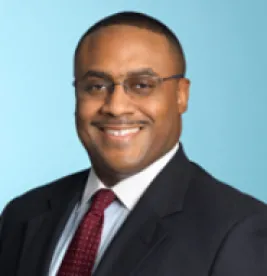In a Twitter world of brief news updates, the NCAA’s tweet at 6:55 AM on October 22nd was blunt, but not unexpected – “Miami failed to monitor activities of a major booster, resulting in a decade of violations.” While the culpability of the University of Miami for former booster (and now convicted felon) Nevin Shapiro’s influence over the program has been presumed, calling the sanctions cited in the NCAA’s 102 page infraction report a slap on the wrist may be generous. The NCAA’s investigation of the U provides universities important ammunition to enforce notions of due process in future enforcement matters, while highlighting the importance of conducting independent investigations to validate self-reporting and corrective actions.
The NCAA and the University of Miami have long been in agreement that a series of actions occurred in violation of NCAA rules by the University’s athletics personnel and highlighted by Shapiro’s brazen actions to provide improper financial incentives to support the athletic program. However, the NCAA’s investigation of the University took an unexpected turn when it was learned that the NCAA’s enforcement staff improperly attempted to obtain evidence from a bankruptcy proceeding to use in its investigation. As a private association, the NCAA does not have subpoena power and often relies on the cooperation of third parties to obtain evidence for investigations. It does not have the ability to use an unrelated private action to procure documents and testimony that would otherwise have been outside of its reach.
The University of Miami contested the NCAA’s decision to proceed with the penalty phase of the investigation through its infractions process, contending that the NCAA’s own actions had irrevocably tainted the investigation. The University also cited its own corrective actions, which included a two-year self-imposed postseason bowl ban.
The NCAA infractions report, which the University of Miami has accepted, gives unprecedented deference to the University’s self-imposed sanctions while adding a three-year probationary period and a modest reduction of nine football scholarships over three years, with the men’s basketball program losing a single scholarship for each of the next three years.
To understand the amount of deference accorded in this NCAA decision, it should be noted the most serious violation in the NCAA manual is “lack of institutional control”. Bylaw 6.01.1 is direct – “the control and responsibility for the conduct of intercollegiate athletics shall be exercised by the institution itself and by the conference(s), if any, of which it is a member.” The NCAA regulations view lack of institutional control with such a serious nature that it is one of the few instances in which the “death penalty” sanction – a complete prohibition for a university to compete in a particular sport – can be instituted.
The NCAA’s findings concluded that, although the University of Miami was responsible for lack of institutional control for various incidents occurring over a ten-year period, the University’s corrective actions and self-imposed discipline provided a substantial basis to structure its punishment. Not surprisingly, this caused much chagrin in Los Angeles where the University of Southern California requested deference to the findings related to its own NCAA investigation.
The infractions report for the University of Miami could not come at a more pivotal moment for the enforcement of rules relating to intercollegiate athletics. The NCAA is currently embroiled in two major legal battles. The first involving Ed O’Bannon and a prospective class of former student-athletes could forever change the concept of amateurism by acknowledging the rights of the student-athletes to financial profits derived from a video game using their likeness. The second involves the NCAA’s failure to address head trauma issues in the athletic competitions of its member institutions, made even more difficult by the NFL’s recent settlement of concussion claims. In addition, the NCAA is in the process of introducing a new structure to evaluate and classify rule violations, which is intended to make athletics personnel more culpable, and specifically coaches.
The message to the hundreds of NCAA member institutions is that you now have the legitimate argument of conducting a better investigation and penalty process than the NCAA. In fact, institutions will be able to eliminate much of the uncertainty that has previously unfolded in lengthy NCAA inquiries by having counsel with expertise in conducting internal investigations and interpreting NCAA rules evaluate prospective allegations from the moment an obligation to self-report arises. The value of a comprehensive assessment is immense considering the reputational and financial risks that can result from an adverse institutional control finding.




 />i
/>i

